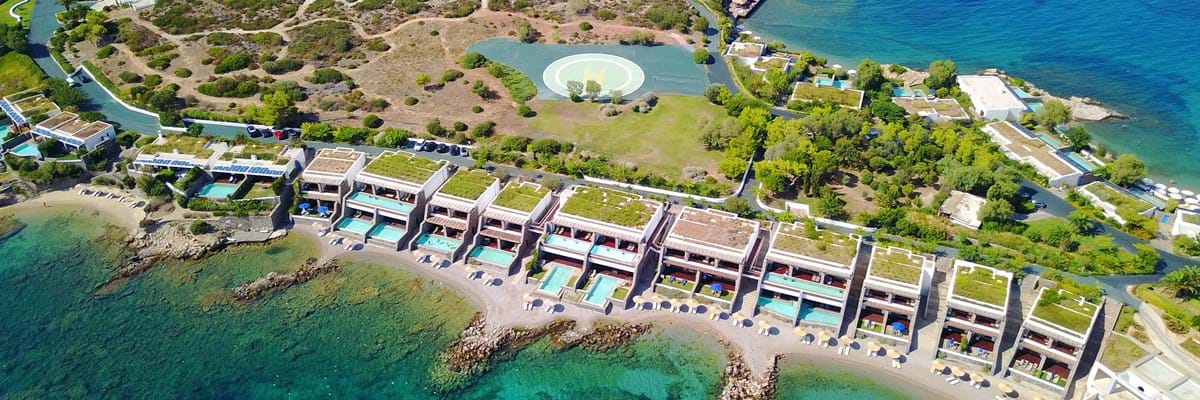The road hugs the emerald-coloured sea as it sweeps past lovely beaches busy with all types of water sports, quieter sandy bays, small rocky coves and magnificent marinas. There are beach bars and tavernas and resorts with five-star spas, restaurants and nightclubs.
Remarkably, this golden coast is less than half an hour’s drive from the centre of Athens. If you don’t fancy driving, then use the metro or trams from the city and take a bus along the coast. You can always enjoy a stroll on one of the palm-fringed esplanades, hire a bike or explore the riviera by boat.
Let’s start our tour in the Bay of Faliro, just a few miles from the city centre and packed with high-quality goodies.
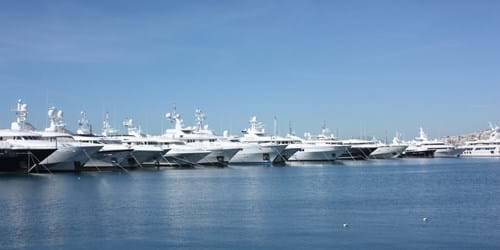
The stylish seaside town of Paleo Faliro, only four miles from the heart of Athens, was given a huge makeover for the 2004 Athens Olympics. It even got its own tram line link with the city centre. Lots of smart waterfront cafes, shops, restaurants and bars, a lovely promenade and a great view of the sunset have helped make this a busy venue for both Athenians and tourists.
Although the beaches aren’t the best, it does have the Flisvos Marina, a mooring spot for the yachts of the super-rich and a starting point for Saronic Gulf boat excursions. It’s a great place for people watching.
There’s a large children’s playground in Flisvos Park as well as pedal go-karts, picnic areas and an educational herb garden stocked with native flora. Nearby a famous Greek warship and a replica of an Ancient Greek trireme are among the vessels displaying 3,000 years of Greek naval history in the Park of Maritime Tradition.
Not far away is the largest park in Athens, the home of the Stavros Niarchos Foundation Cultural Centre, where the attractions include boats and bike hire, an open-air cinema and an unusual “dancing fountain” display as well as the National Library and National Opera of Greece.
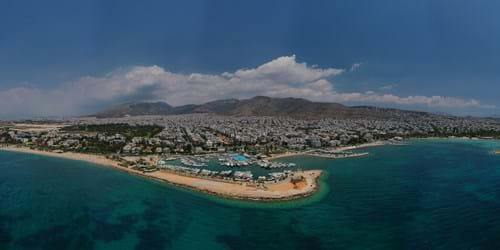
Then on to Glyfada, one of the most elegant, up-market areas of Athens, a Knightsbridge-on-Sea or Beverley Hills of Greece. As well as a palm-lined beach it is home to many of Greece's millionaires, ministers and celebrities and stretches from the foot of the scenic Hymettus Mountain to the Saronic Gulf. This fashion-conscious suburb is known in Greece for its stylish cafes, well-known restaurants, boutiques and cosmopolitan summer clubs.
The best beaches in this area are private and charge a fee for entry but offer splendid facilities. Asteras Beach has sunbeds and umbrellas, lockers, changing rooms, showers, trampolines, a kid’s playground, a self- service restaurant, three bars and water sports.
Glyfada also has an 18-hole golf club that welcomes non-members. The weekly market on a Thursday is a sensory experience with a marvelous array of aromas, textures and tastes from Greek specialities. On the quay is a rescue and rehabilitation centre for sea turtles, run by ARCHELON, the Sea Turtle Protection Society of Greece. The staff there offer free educational tours.
The last stop on the tram from the city centre brings you to Voula which boasts two organised beaches with good facilities and Blue Flag cleanliness. There are modern beach bars, Jet Ski equipment, beach volleyball courts, a dance deck and waterslides. There is also an area designed to assist people with disabilities to swim.
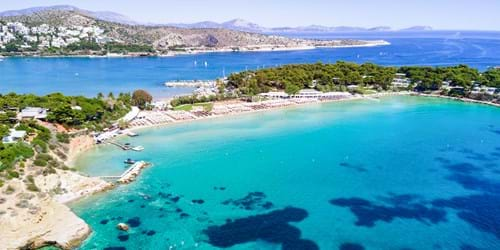
The picturesque harbour of Vouliagmeni, to the east of Voula, offers stunning views of the distant Saronic Gulf islands. The town has a wide range of elegant cafes and restaurants and some popular peninsular beaches, making it another summer hotspot for Athenians.
Vouliagmeni Lake, only a five-minute walk from the little town square, is fed by lukewarm springs welling from underground. The mineral and brackish water feels silky to swimmers and is said to help people with rheumatism and arthritis. Vouliagmeni means “sunk” and the lake is said to hide a lost city in a sunken limestone cave.
Astir Beach on Apóllonos Street is one of the area’s most luxurious and popular beaches with its shallow, turquoise water, smooth sand, excellent facilities and Blue Flag certification for cleanliness. There’s a fee to use this beach but the riviera also has some lovely public state-run beaches and others where you can hire a sunbed and shade from a beach café for a few euros or the price of a drink.
Beyond Vouliagmeni lies the bustling little resort of Varkiza, which is said to have one of the best, and cleanest, public beaches within striking distance of Athens. There are good water sports on offer and secluded coves to escape the crowds. Varkiza was originally a fishing port and is still renowned for its fish market and fresh seafood restaurants.
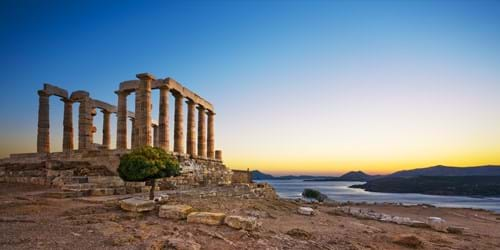
Look out for more public beaches as the road hugs the coves and headlands of the Saronic Gulf as you approach Agia Marina and the water sports centre of Anavyssos. Nearby Paralia, Palaea Phocaea and Thymari are good for swimming. The further east you travel the quieter the beaches – and the roads - become.
Sophisticated tourist resorts such as upmarket Lagonissi and small Saronida are on the road before it reaches Cape Sounion where the still-impressive 2,500-year-old Temple of Poseidon stands. The site may look familiar. Scenes in the BBC’s spy thriller Little Drummer Girl were filmed there.
The temple, made entirely of white marble, was built to honour Poseidon, god of the sea, and to protect the coast of Attica from the Spartans. Its clifftop location offers a spectacular view over the sea while the nearby beaches are ideal for a refreshing dip on a hot summer’s day. They have beach cafes too.
So there you are, at one of the most famous ancient sites in Greece overlooking the beautiful Aegean Sea at the far end of the Athenian Riviera. And only an hour’s drive from the Acropolis!
The banner image on this page is of the Grand Resort Lagonissi.



